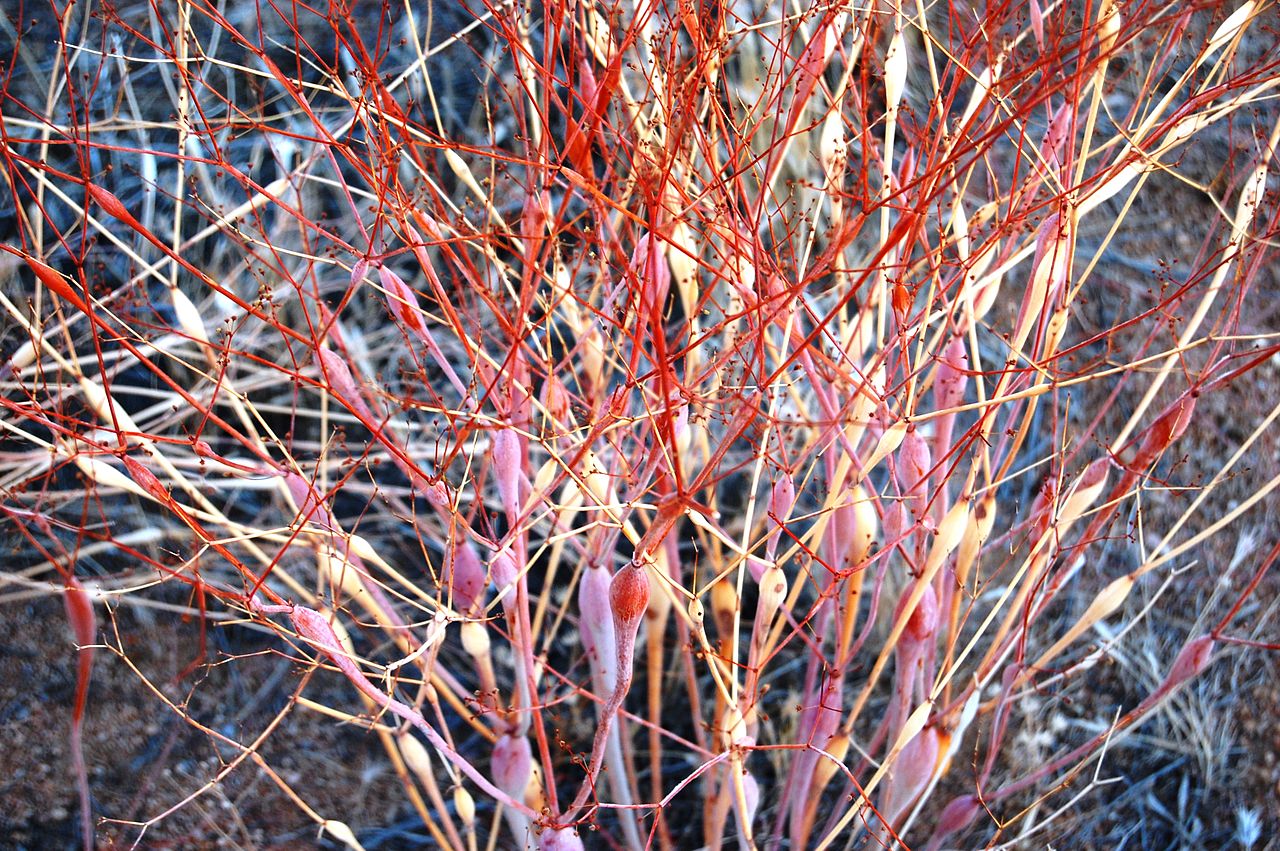Desert Trumpet Plant Info: Information About Desert Trumpet Wildflowers


What is a desert trumpet? Also known as Native American pipeweed or bottlebush, desert trumpet wildflowers (Eriogonum inflatum) are native to the arid climates of the western and southwestern United States. Desert trumpet wildflowers have developed interesting adaptations that distinguish them from other plants and allow them to survive in punishing environments. Keep reading for more desert trumpet plant info, including desert trumpet growing conditions.
Desert Trumpet Plant Info
Each desert trumpet plant displays a few spindly, nearly leafless, grayish green stems (or sometimes a single stem). The upright stems rise above basal rosettes of crinkly, spoon-shaped leaves. Each stem has an odd-looking inflated area (thus the alternative name “bladder stem”). For many years, experts believed the inflated area – which measures about an inch (2.5 cm.) in diameter – is the result of an irritation caused by a larva that burrows in the stem. However, botanists now believe the swollen area holds carbon dioxide, which benefits the plant in the process of photosynthesis. Just above the inflated area the stems branch out. Following summer rainfall, the branches display clusters of small, yellow flowers at the nodes. The plant’s long taproot provides moisture for several seasons, but the stem eventually turns from green to reddish brown, then to pale yellow. At this point, the dry stems remain upright for several years. The seeds provide forage for birds and small desert animals, and the dried stems offer shelter. The plant is pollinated by bees.
Desert Trumpet Growing Conditions
Desert trumpet wildflowers grow in low elevations in deserts, primarily on well-drained sandy, gravelly, or rocky slopes. Desert trumpet tolerates heavy, alkaline soil.
Can You Grow Desert Trumpets?
You can grow desert trumpet wildflowers if you live in USDA plant hardiness zones 5 through 10 and you can provide plenty of sunlight and well-drained, gritty soil. However, seeds are difficult to find, but nurseries that specialize in native plants may be able to provide information. If you live near wild plants, you can try to harvest a few seeds from existing plants, but be sure not to over harvest this important desert wildflower. Plant the seeds in sandy compost, preferably in a greenhouse or warm, protected environment. Transplant the seedlings into individual pots and keep them in the warm environment for their first winter, then plant them outdoors in spring or early summer, after all frost danger has passed. Handle the plants carefully because the long taproot doesn’t like to be disturbed.
Gardening tips, videos, info and more delivered right to your inbox!
Sign up for the Gardening Know How newsletter today and receive a free copy of our e-book "How to Grow Delicious Tomatoes".

A Credentialed Garden Writer, Mary H. Dyer was with Gardening Know How in the very beginning, publishing articles as early as 2007.
-
 8 Perfect Flowers To Plant With Tomatoes To Boost Yields & Banish Pests
8 Perfect Flowers To Plant With Tomatoes To Boost Yields & Banish PestsDon’t forget flowers when choosing companion plants for your tomato beds or pots. These pretty, fragrant blooms add beauty but are also highly beneficial.
By Mary Ellen Ellis
-
 Want The Longest Lasting Hydrangea Flowers? Grow These 8 Panicle Hydrangea Varieties
Want The Longest Lasting Hydrangea Flowers? Grow These 8 Panicle Hydrangea VarietiesFor ornamental shrubs that deliver the longest flowering seasons with plush blooms and delicate hues, these panicle hydrangea varieties are essential in your yard
By Tonya Barnett